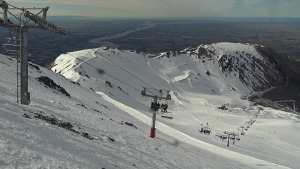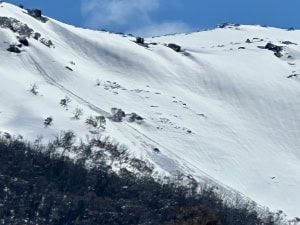The Fourth Phase is More Than a Snowboard Film, It’s an Ode To Nature – Review
![]()


Travis assembled an all-star crew for the World Premiere just a few days ahead of the Aussie debut in Los Angeles. That’s how many people it takes to pull off The Fourth Phase Image:: Colin Young-Wolff / Content Pool
Transfer | Alex Horvath
Travis Rice has an incredible presence both on, and off the big screen. For years he’s been at the forefront of action sports filmmaking alongside long time friend, Curt Morgan. Together, they command attention. So much in fact, that their last snowboarding feature film topped the best-selling list in 2011, 2012, 2013 and came in just behind Jeremy Jones’ Higher in 2014. It’s safe to say that Travis is now a movie star, and his movies are anticipated with as much enthusiasm, fervour and hype as most Hollywood films of the modern era.
It’s no wonder then, that when the curtain dropped at the Sydney premiere at The Star’s brand new Event Cinema, that there was not an empty seat to be seen. The movie’s reputation had made it one of the most talked about and highly anticipated releases since well, since his last movie. So now the dust has settled, how was it?
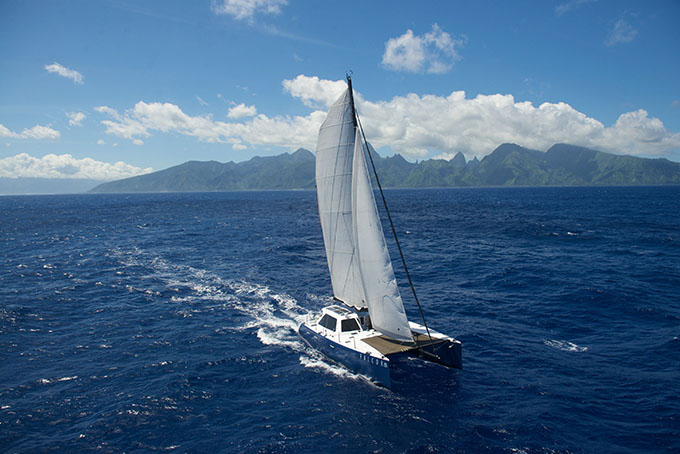
Image:: Tim McKenna / Red Bull Content Pool
“Alongside the action, a rare insight into Rice’s snowboarding ethos unravels. But this is only a hint of what’s to come.”
Act one begins in Travis’s lifelong hometown of Jackson, Wyoming. Alongside Pat Moore, Ben Ferguson, Cam Fitzpatrick, Bode Merrill and Bryan Iguchi, Travis opens the film much like any other snowboard movie of recent time: with high-paced progressive snowboarding accompanied by loud thrash-metal music that gives a ceremonious nod to core-snowboarding’s cultural identity.
The jumps are huge, the snow is deep and the corks are impressive. Alongside the action, a rare insight into Rice’s snowboarding ethos unravels. But this is only a hint of what’s to come. All of a sudden the focus shifts, and the snowboarding becomes secondary to an Attenbourough-like exploration of the ebbs and flows of water throughout the North Pacific.
Viewers are quickly transported to the waters of Tahiti – aboard Travis’ catamaran, Falcor. Slowly, Rice peels back layers of complexity and takes the audience through an introspective reflection into his own considered and highly analytical outlook on the act of riding snow in huge mountains. It’s here that the greater story starts to reveal itself and so does the title, The Fourth Phase. Essentially, the moniker is a reference to the work of Dr Gerard Pollack. His life’s work is based around a theory that the recognised states of water – solid, liquid and gas – actually ignore a so called “Fourth Phase”. It’s this Fourth Phase that Pollack believes hold the key to explaining physical phenomena that is unexplainable by modern science.
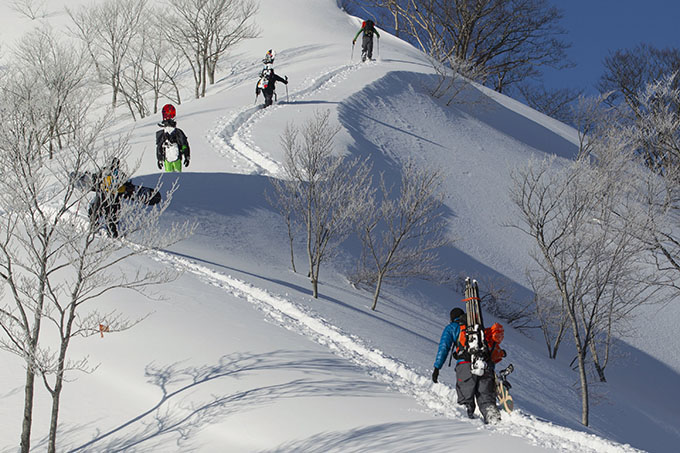
Image:: Mike Yoshida / Red Bull Content Pool
Now, you might be thinking, just what does this have to do with snowboarding? If you ask Travis, it’s everything. Who better to explain it than himself: “This hydrological cycle, it’s easy to just write it off as, ‘Well, that’s the weather.’ We steal a lot of the magic from things that we give names to. It’s this beautiful, choreographed cycle of life. If you were standing on the moon looking back at earth, at one point during the day, you’re looking at a blue planet. The ocean traps the sun’s heat energy and turns it into a solar engine. A system of ocean currents called The North Pacific Gyre moves in a clockwise direction, driven by wind and the rotation of the earth, distributing this heat energy around the planet. This helps fuel the storms that drive our winters. I realised by combining my love of the ocean with my love of the mountains it might be possible to actually follow the flow around the north Pacific, travel with the water that melts down from the Continental Divide, sail with it as it sweeps across the ocean and turns into the snow that blankets Japan. The cycle swings up and tears past the Kamchatka Peninsula and then finally banks into the catcher’s mitt that forms the Gulf of Alaska. These charged weather systems coming off the ocean hit these coastal mountains which ring out precipitation like a sponge, creating some of the most incredible snow formations on the planet.”
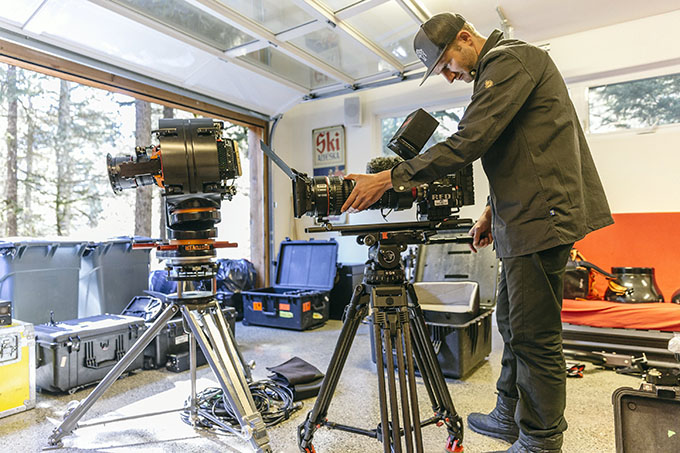
Image:: Scott Serfas/Red Bull Content Pool
And just like that, the narrative of the movie comes together, and viewers are transported along with Travis and his friends on a relentless pursuit of snow in some of the most remote and inhospitable mountains on our planet. Japan. Alaska. The Kamchatka Peninsula and the Kuril Islands. The movie leaves no stone unturned as the crew follows the contours of the North Pacific, discovering untold bounty and severe disappointment along the way.
The movie is a wild ride, and it provides an insight into a side of Travis Rice the world has never seen. Through his relentless pursuit of snow, Travis has reconciled with the view that every one of us beats to the rhythm of the earth’s hydrological cycle. In the end, viewers are left with an incredible understanding of what drives one of the most well known action sports athletes of our generation, along with a new understanding for the natural processes that drive our environment. To say that it is epic would be an understatement.

